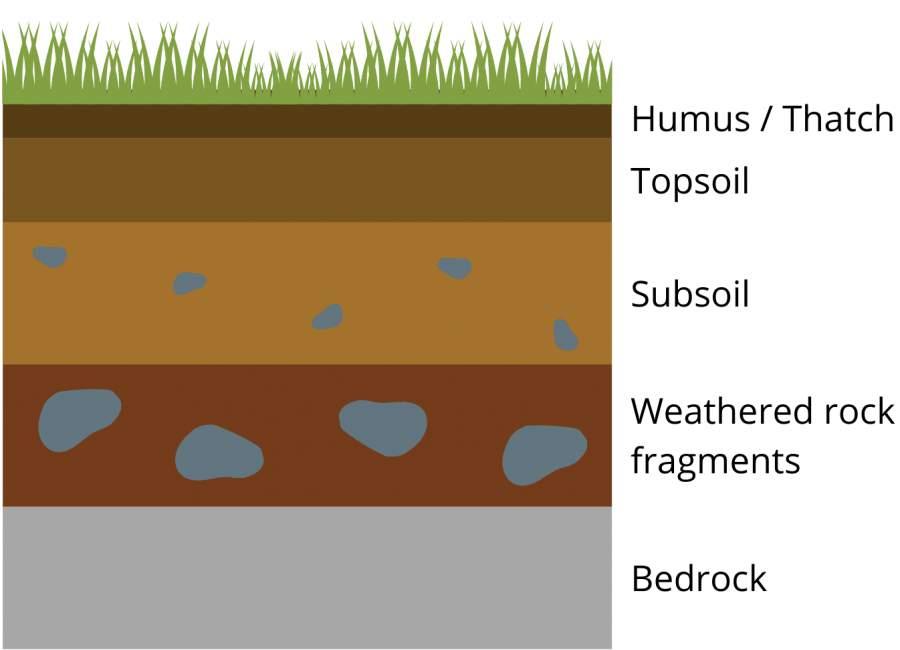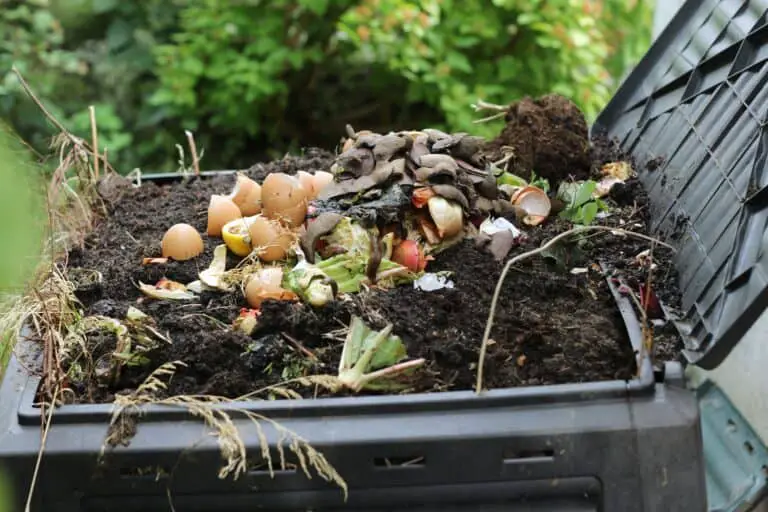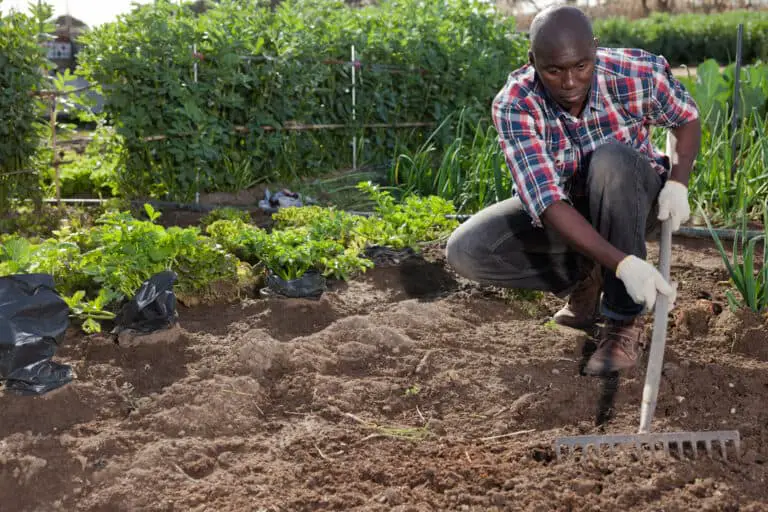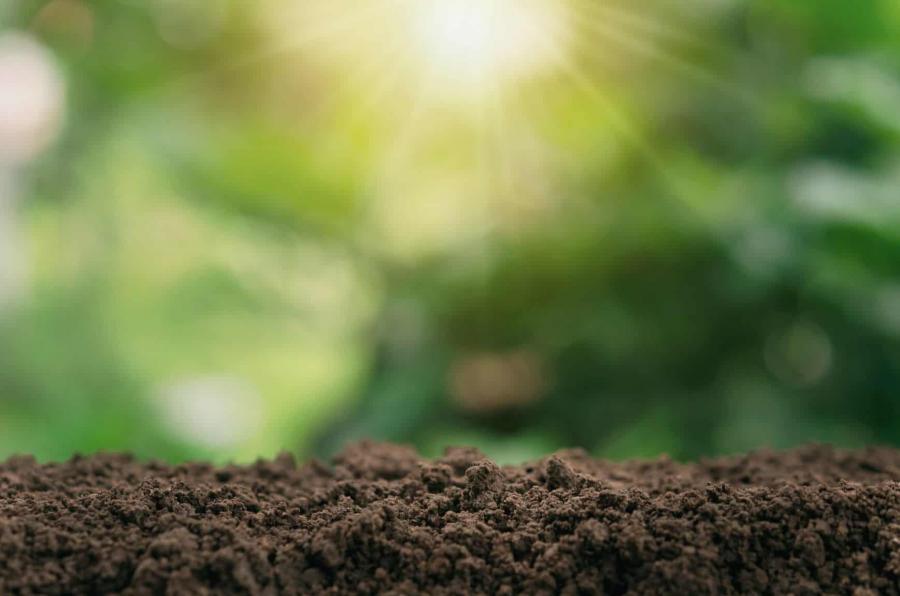The terms “topsoil” and “compost” are often used interchangeably, but they’re very different things. They have different properties and, therefore, different uses. So should you use topsoil or compost for grass seed?
It can be confusing to know which one you should use and when. When redoing my lawn, I found lots of conflicting information on the web about whether I should be using topsoil or compost to lay grass seeds.
To help others facing the same situation, I put together this guide on what differentiates topsoil and compost and which is best.
What is topsoil?
Topsoil is the soil layer that lies between your lawn’s surface and the subsoil.

It has high concentrations of organic matter and microorganisms, so is where most root growth occurs. The thickness of the layer will vary from lawn to lawn. A healthy lawn will have a topsoil layer between 5 and 10 inches thick.
What is compost?
Compost is a soil amendment that’s made by decaying a mix of organic matter.

Fruit and vegetable waste, manure, leaves, and wood chips are all examples of things that you can compost. It’s incredibly nutrient-rich and can be used as an organic fertilizer. Types of compost include vermicompost, leaf mold, and manure compost.
Compost vs. Topsoil
To determine whether you should use topsoil or compost for grass seed, it’s important to understand the differences between the two.
Topsoil is often sourced from building sites or fields. It’s then sold as it is (budget topsoil) or screened to remove debris and sold as premium topsoil.
Topsoil tends to be cheaper than compost, and you can buy it in bulk. However, it can contain residual weed seeds and chemicals from pesticides or fertilizers applied in its previous life. Also, unless the topsoil has been mixed with compost, there’s a risk it could be relatively inert. Buying high-quality topsoil from a trusted vendor will minimize these risks.
Compost is packed with beneficial organisms but is more expensive than topsoil, especially when you’re looking to buy it in bulk. Of course, making it yourself is free, but most people don’t generate enough waste to produce large quantities. It can take years to create finished compost, so it requires some planning!
If the compost has been hot composted, then it’ll be free of weed seeds. If any ingredients used were contaminated with chemicals, then traces of these chemicals can remain. But this is very unlikely if you buy the compost from a reputable source.
In terms of texture, topsoil has a better structure than pure compost and retains more water. Adding compost to existing soil can help improve things like structure and water retention capacity. But by itself, we wouldn’t recommend it as a growing medium. As a general rule, topsoil adds depth, and compost improves quality.
When to use topsoil
Topsoil is best to use when you’re establishing something new and you know your current topsoil layer is thin or low quality. It will add bulk to your garden and provide a good base for long-term healthy growth. The better quality and thicker your topsoil layer are, the easier it is for strong deep roots to develop.
Topsoil is great for:
- Laying a new lawn
- Building a raised bed
- Creating a vegetable garden
- Leveling a lawn
- Designing a survival garden layout
When to use compost
If you’re adding to an existing lawn, then use compost. It’s too potent and expensive to be used as the sole medium for most yard projects. You can always mix some compost with topsoil if you want to ensure high levels of organic matter within your topsoil layer.
Compost is excellent for:
- Topdressing a lawn
- Creating a potting mix
- Mulching
- Mixing with topsoil
Topsoil or compost for grass seed
If your whole lawn is suffering and you’re reseeding the entire thing, then it’s likely that your existing topsoil is low quality. To fix this problem, it’s best to apply 3-4 inches of topsoil before you lay the seed, then top dress the new seeds with compost. The new layer of topsoil will allow the roots to anchor well, and the compost will supply much-needed nutrients to feed the grass and protect it from hungry birds.
If your lawn is generally healthy but requires maintenance where patches have been overfertilized or attacked by pests, then applying a light layer of compost is the best way to go. Here adding topsoil isn’t necessary because your existing topsoil layer is already healthy.
Should I till my lawn?
Tilling the lawn and mixing compost into it at the same time is another method you might see suggested.

Tilling the lawn might sound like a good idea, but we don’t recommend it. Tilling a lawn is labor-intensive and can create a problem by unearthing weed seeds that were previously buried too deep to germinate.
Also, you risk having a bumpy lawn if you properly level and compact the soil after tilling. Most of the time, dethatching and aerating your lawn will be sufficient to loosen the soil.
